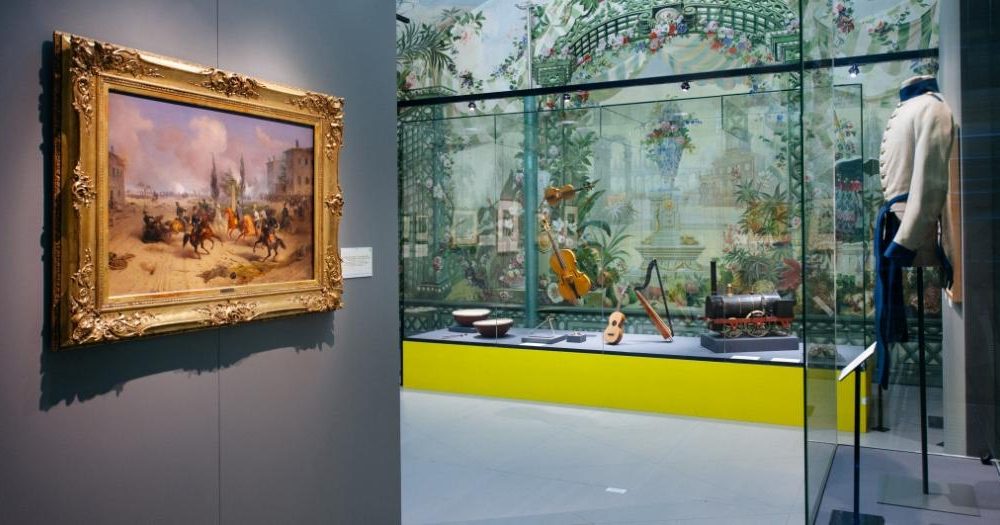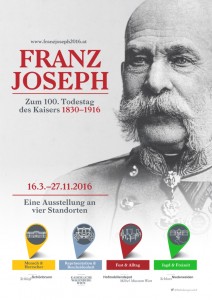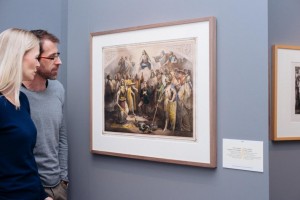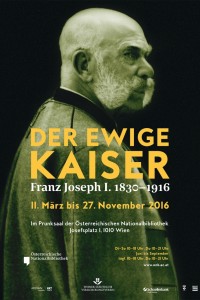Franz Joseph – 2016 Exhibitions for the 100th Anniversary of His Death

Received by the Emperor
November 21, 2016 is the 100th anniversary of Emperor Franz Joseph’s death. In his 86 years, 68 of which Franz Joseph ruled the Habsburg monarchy, there were political as well as private heights and depths, successes and defeats. The large special exhibition, on display through November 27, 2016 at four of the Emperor’s locations and life stations in Vienna and Lower Austria, deals sympathetically and at the same time critically with the Emperor as a person. – In addition, an exhibition in the Austrian National Library also well worth seeing deals with Emperor Franz Joseph as a public figure. – I love history, especially Austrian history, and am thrilled by the variety and quality of the exhibitions at all locations.
Spared nothing
Franz Joseph Karl of Austria first saw the light of day in Schönbrunn on August 18, 1830 – and already at birth his life was planned for him and his career as Emperor preordained. At a young 18 years of age, Franz Joseph I assumed the sovereignty of a multiethnic state whose signs were said to point towards upheaval, revolution, self-determination and reformation. This was a turbulent era that Franz Joseph managed with rigor and discipline. His politics left many problems unsolved and in the long run contributed to the downfall of the monarchy. Nevertheless, Franz Joseph was considered – and still is to the present day – a benchmark and stable symbol of the empire. The luster of the imperial dynasty was likely able to cover up a lot.
Franz Joseph – on the 100th anniversary of the Emperor’s death, 1830 – 1916
At the focus of the comprehensive exhibition (viewable through November 27, 2016) is the person and life of the monarch, divided into four subject areas and perfectly organized by Schloß Schönbrunn Kultur- und Betriebsges.m.b.H. in collaboration with Kaiserliche Wagenburg Wien,the Bundesmobilienverwaltung and Schloss Niederweiden:
Man & Monarch
Schönbrunn Palace, Vienna, open daily 9:00 AM – 5:00 PM
With its so-called “White Gold Rooms,” “Bergl Rooms” (named after the artist Johann Bergl) and the “Crown Prince Apartment,” Schönbrunn Palace is opening areas that have never before been opened to the public especially for the Franz Joseph exhibition. This part of the exhibition is dedicated to Franz Joseph as a man, his family, childhood and upbringing, and his major life events: from his ascension to the throne, his marriage to Elisabeth, the suicide of his son the Crown Prince Rudolf, through to defeats such as at the Battle of Königgrätz, and the Austro-Hungarian Compromise of 1867. The exhibition is dedicated to the beginning of the First World War as well as Franz Joseph as a strict father, enthusiastic grandfather and son alike.
Representation & humility
Kaiserliche Wagenburg Wien, open daily 9:00 AM – 5:00 PM
The monarch’s carriages and clothes are at the center of attention at the Kaiserliche Wagenburg. Imperial carriages and festive dress show just how impressive events such as the Emperor’s wedding with Elisabeth (1854), the coronation in Hungary (1867) and the ceremonial burial (1916) proceeded.
Festivities & everyday
Hofmobiliendepot-Möbel Museum Vienna (Imperial Furniture Collection), open daily 10:00 AM – 6:00 PM
Franz Joseph’s oft-cited humility stood in sharp contrast to his ostentatious lifestyle, which was imposed on him due to his status. Balls and extended travels were part of his life. This exhibition takes a critical look especially at the myth of Franz Joseph in the “Sisi” films and the “cult of the emperor” that persists to this day.
Hunting & leisure
Schloss Niederweiden, Lower Austria, open daily 10:00 AM – 6:00 PM
Previously open only on weekends, the imperial hunting lodge Niederweiden im Marchfeld, can be visited daily during the Franz Joseph exhibition. Since his early youth, Franz Joseph – in addition to his enthusiasm for all things military – was also an enthusiastic hunter. In addition to Franz Joseph’s personal relationship to the art of hunting, the exhibition takes a closer look at the Habsburg hunting grounds, especially Bad Ischl. Further focal points: hunting societies and their political meaning, as well as the passion for hunting shared by other Habsburgs, hunting management and registering Franz Joseph’s “hunting bag.”
For more detailed info, visit: http://www.franzjoseph2016.at/en/
TIP 1:
Purchase a combined ticket for all 4 exhibitions:
€ 25.00 for adults, € 16.00 for children ages 6 – 18.
TIP 2:
On the exhibition’s website above you’ll also find two highly interesting virtual exhibitions on the subjects of “The World of the Habsburgs” and the “First World War and the End of the Habsburg Monarchy”.
The eternal Emperor. Franz Joseph I. 1830 – 1916
When Franz Joseph died on November 21, 1916, his omnipresent face for generations was the only constant of the disintegrating Habsburg empire. From his childhood, Franz Joseph was a public figure. Up to his death, he was probably the most depicted person of the 19th century. The exhibition, viewable through November 27, 2016 in the Prunksaal of the Austrian National Library, documents the political propaganda distributed with images of the Emperor already during his lifetime. Gifts, books and periodicals, above all photos and drawings, reflect the reverence shown to the Emperor. Personal objects from the estates of Katharina Schratt and Archduchess Maria Theresa von Braganza (Infanta Maria Theresa of Portugal), as well as letters by Franz Joseph to his mother and his wife “Sisi,” offer a look behind the scenes. The farewell letters by Mary Vetsera, discovered in 2015, are also displayed publicly for the first time.
A highlight is the 10-meter-long picture wall with 86 portraits from the Emperor’s 86 years, from when he was a baby through to becoming an old man, accompanied by important stations of his life. In the Austrian National Library there are now more than 10,000 photographs and personal documents of Franz Joseph.
For further details and info, visit: http://www.onb.ac.at/ev/index.php
Opening hours:
Tuesday – Sunday 10:00 AM – 6:00 PM, Thursday 10:00 AM – 9:00 PM
Summer opening hours in June, July, August, September:
Daily 10:00 AM – 10:00 AM – 6:00 PM, Thursday 10:00 AM – 9:00 PM
Admission: € 7.00 for adults; free admission for everyone under 19 years of age.
TIP:
The Austrian National Library is offering even more. The further museums, for example the Papyrus Museum, the Globe Museum or the new Literature Museum, are worth a visit.
I hope, the exhibitions will enthuse you as well as they enthused me.
To say it with the words of Emperor Franz Joseph, “It was very lovely; I was very pleased.”
Data and image sources: © Schloß Schönbrunn Kultur- und Betriebsges.m.b.H., Österreichische Nationalbibliothek.
With many thanks for the kind support.













